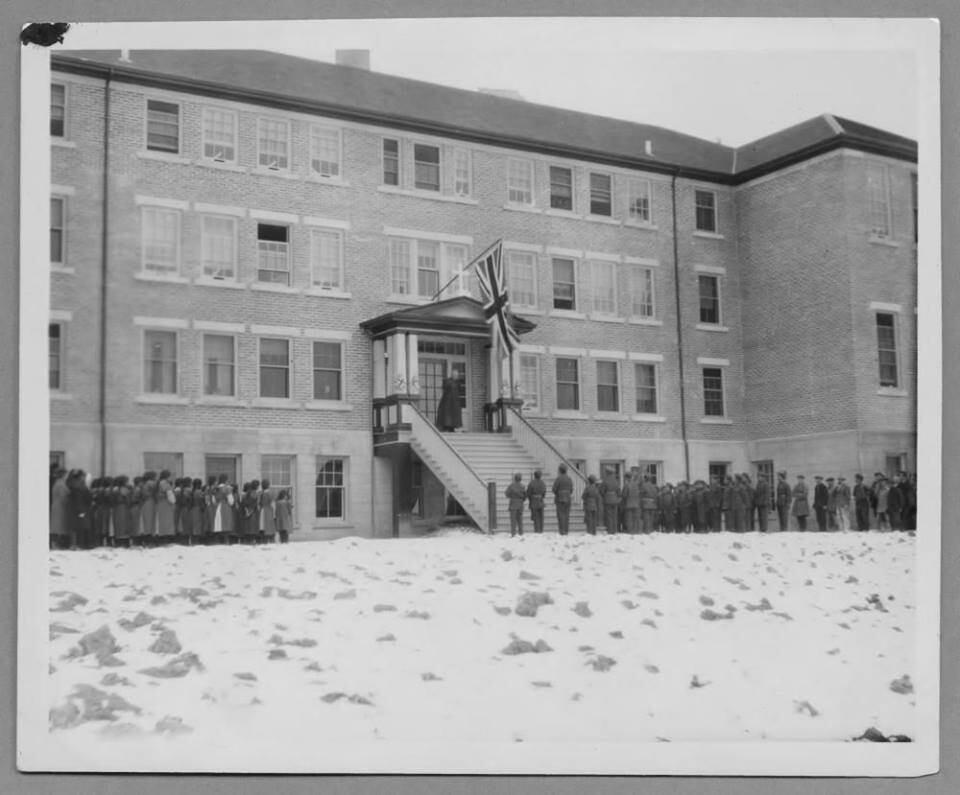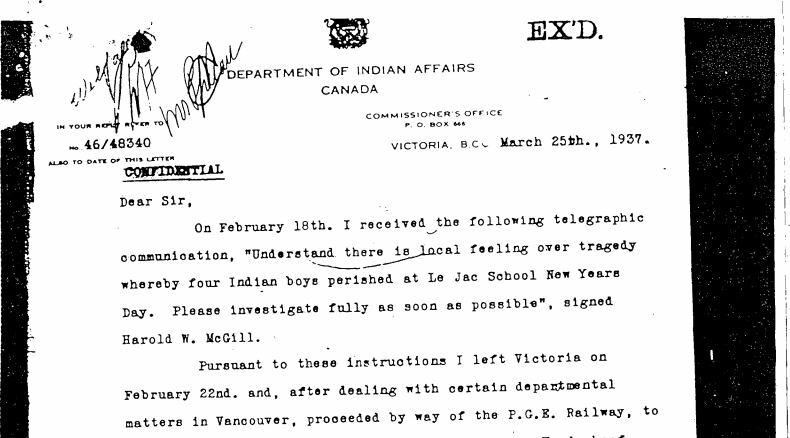Nadleh Whut'en to search former Lejac Residential School grounds

WARNING: This story contains distressing details.
Another residential school in British Columbia is to be searched for potential unmarked graves.
Nadleh Whut'en, a First Nation based in northern B.C., says it is planning to search the Lejac Residential School using both ground-penetrating radar and magnetometry to detect irregularities underground.
The nation says an estimated 7,850 Indigenous children were forced to attend the Lejac Residential School, which operated about 140 kilometres west of Prince George, B.C., from 1922 until 1976.
The school made national headlines in the late 1930s when four boys — a nine-year-old, an eight-year-old and two seven-year-olds — were found dead, their bodies frozen, after they ran away and tried to cross nearby Fraser Lake.

In March 1937, the Indian Commissioner of B.C. investigated the deaths of four boys who had run away from Lejac Residential School. (Nadleh Whut'en First Nation)
Nadleh Whut'en Chief Beverly Ketlo says plans to search the grounds got underway after the Tk'emlúps te Secwépemc First Nation announced that ground penetrating radar had detected about 200 potential burial sites at the former Kamloops Indian Residential School in 2021.
"The impact of that announcement sent a shockwave through all the First Nations communities," Ketlo told CBC's Daybreak North host Carolina De Ryk.
"Our nation has a long history of trauma associated with the Lejac Indian Residential School and we carry a heavy burden in stewarding this site, since children from over 70 nations attended the institution."
A team made up of survivors and intergenerational survivors is working to determine how to manage the former site of the school, and this week the team is meeting representatives from other First Nations to learn how they've approached this type of work.
According to a news release from Nadleh Whut'en, the Stallet'en First Nation and the B.C. Assembly of First Nations, a cemetery has long been located at the site, but the search is looking at other parts of the grounds that have been identified by survivors.
Chief Robert Michell of the Stellat'en First Nation, which, like the Nadleh Whut'en, is based close to the residential school site, said asking people to relive their trauma and time at Lejac has been challenging.
"It was a difficult journey both mentally and emotionally for a lot of the people that had to speak up and talk about past grave sites," said Michell, who is a survivor himself.
LISTEN | Nadleh Whut'en, Stellat'en First Nation chiefs explain search:
However, he said, the search is being done to help provide closure to survivors and their families.
"We're not going to find everyone. There's a lot of atrocities that took place that we know we will never find some students. But it's work that provides some of the survivors some closure. Something is being done to restore some of the historical atrocities that these institutions put on survivors," Michell said.
Several First Nations across Canada have employed ground-penetrating radar and other methods to search the grounds of former residential schools. The tool does not identify human remains, but instead looks for anomalies in the soil.
Nadleh Whut'en says if the surveys do indicate geophysical signatures that are representative of burials, further investigation will be needed.
The National Centre for Truth and Reconciliation estimates about 4,100 children died at residential schools, based on death records, but has said the true total is likely much higher. The Truth and Reconciliation Commission said large numbers of Indigenous children who were forcibly sent to residential schools never returned home.
Support is available for anyone affected by their experience at residential schools or by the latest reports.
A national Indian Residential School Crisis Line has been set up to provide support for survivors and those affected. People can access emotional and crisis referral services by calling the 24-hour national crisis line: 1-866-925-4419.
Mental health counselling and crisis support is also available 24 hours a day, seven days a week through the Hope for Wellness hotline at 1-855-242-3310 or by online chat at hopeforwellness.ca.

